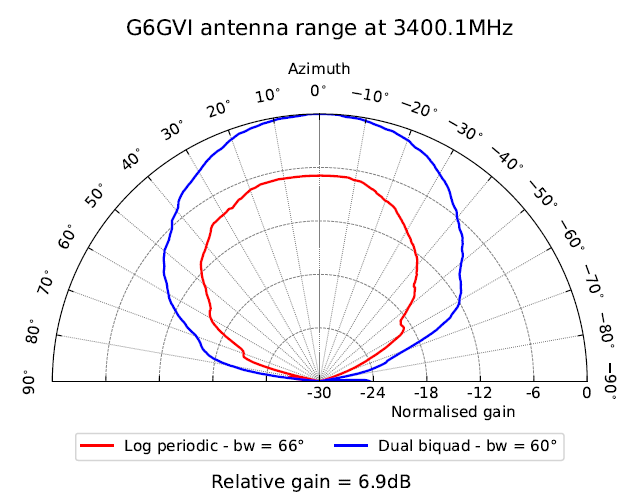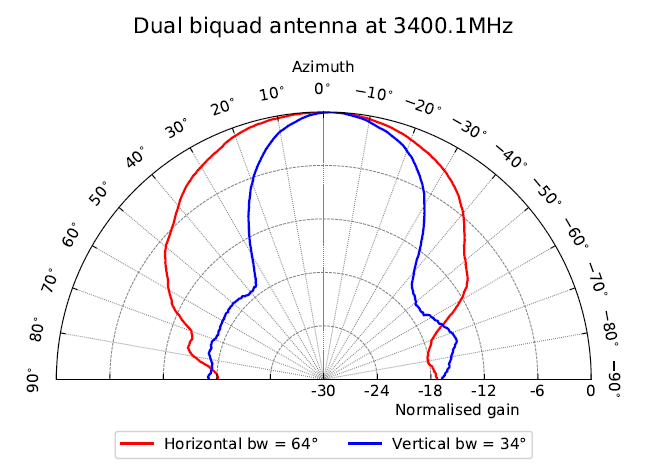
I'd often heard John MW1FGQ extolling the virtues of his bi-quad antennas, but when he sent me this picture of his latest "mobile" version, I decided that I really must try one for myself.

But I wasn't thinking of a compact "mobile" version, so I decided to start with a double bi-quad design.
I had half a spool of 2mm enamelled copper wire left over from my 12-turn helix, so this was soon bent into shape to make the "element". It's fed with a short length of RG-223 co-ax, fitted with a balun sleeve made from the braiding off some UR67.
Then I found a piece of aluminium plate for the reflector, but it was a bit too small, so I augmented it with some lightweight galvanised fencing wire (doubled over for extra strength, and to reduce the mesh size to 0.5 x 1").
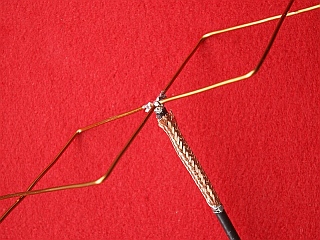
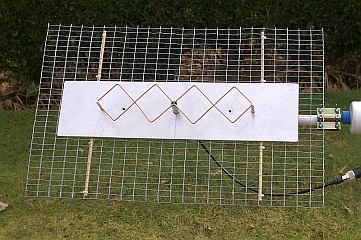
The element is supported above the ground-plane by three plastic tubes, with the feeder threaded down the centre one.
The final construction did end up a little heavier that I'd originally intended (due to the wooden support which I built for the lightweight mesh reflector) but it's still light enough to go up on my 9m wobbly mast.
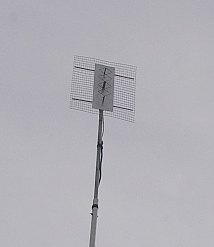
The benefits of this antenna are its relatively simple construction and broad beamwidth. Within its first day of testing, I was able to manage a comfortable 3-way QSO with John MW1FGQ in North Wales and Andy G1HBE in Manchester - I'd never managed to find a common beam-heading for the two of them with any of my other antennas!
Some years later I built one for the 9cm (3.4GHz) band and measured its performance on my back-garden test-range. I compared it with a log-periodic with a gain of around 5.5dBi - hence the estimated gain is ~12.5dBi and the second plot shows the wide horizontal beamwidth and narrower elevation pattern:
